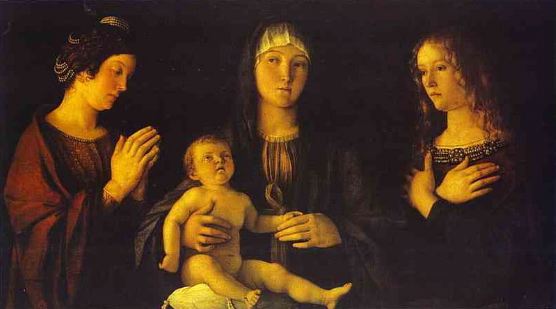
My
favorite image of Mary Magdalene in art is part of a triple portrait by
Bellini at the Academia in Venice showing the Virgin and child flanked
by St. Catherine (left above) and Mary Magdalene (right above.)
I'm assuming that this St. Catherine is St. Catherine of Alexandria,
known as “the pure”, selected as a pendant to Mary Magdalene, the
“impure” — and indeed the Magdalene here does seem to have a
penitential air, as though meditating on past sins. An
allegorical interpretation is inevitable since St. Catherine lived
after the time of Jesus and Mary Magdalene would not, according to tradition, be in a
state of penitence until she encountered Jesus at the time of his adult
ministry. The Magdalene's carnal nature is not unduly stressed,
however, which means one is not necessarily impelled to view her
in the context of her fraudulent identification as a reformed prostitute.
In any case my admiration of the portrait has nothing to do with
theology — I just find it enchanting for the beauty and sweetness of
the figure, its authoritative evocation of whatever real-life Italian
girl of the Renaissance sat for the painter. When you stand before
the painting in Venice you feel you are in her living presence, echoing
through time.
St. Catherine of Alexandria lived, according to legend, in the 3rd
Century and was martyred for her faith. She was initially
condemned to be broken on the wheel, a kind of torture rack, but when
she touched it the wheel broke instead, and she was beheaded. The
Catherine Wheel thus became a symbol of the martyr's metaphorical
triumph over persecution. In 1969 St. Catherine of Alexandria
lost her day in the
Roman Catholic calendar of the saints
because of a lack of evidence as to her actual existence, though she
was a figure of great importance in the history of the church.
(One of the oldest monasteries in the world, in the Sinai desert, bears
her
name.) She got her day back in 2002. Perhaps some day Mary
Magdalene will get her reputation and good name back.
Below is Catherine with her wheel as imagined by Caravaggio:
